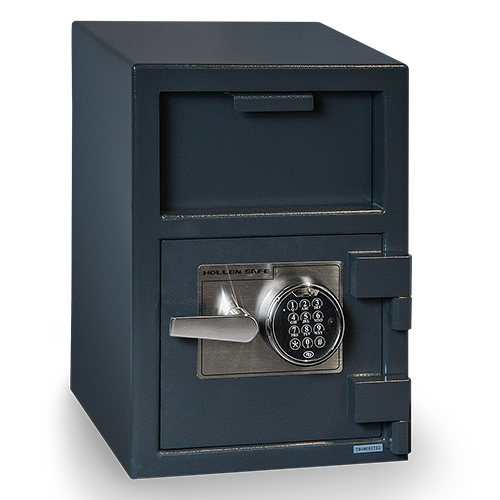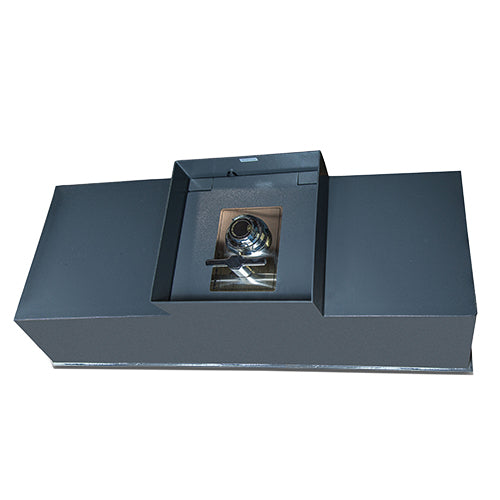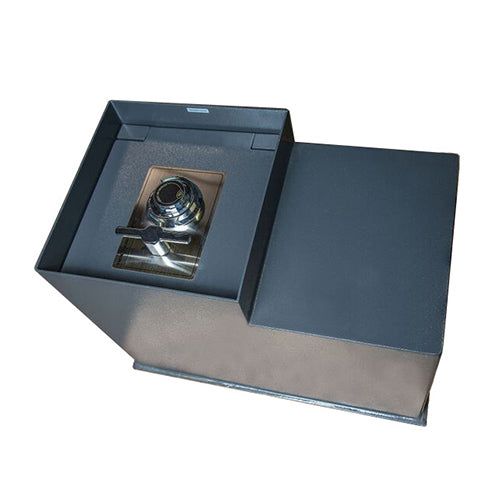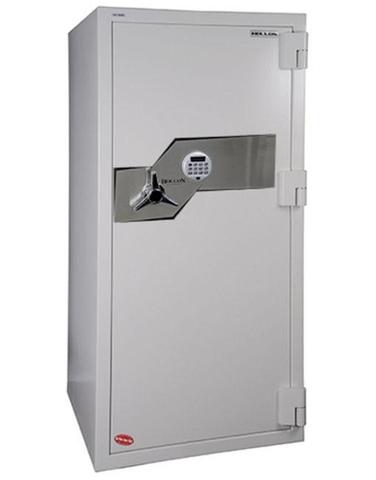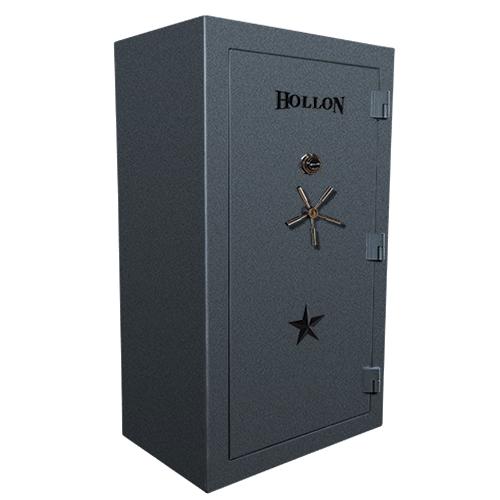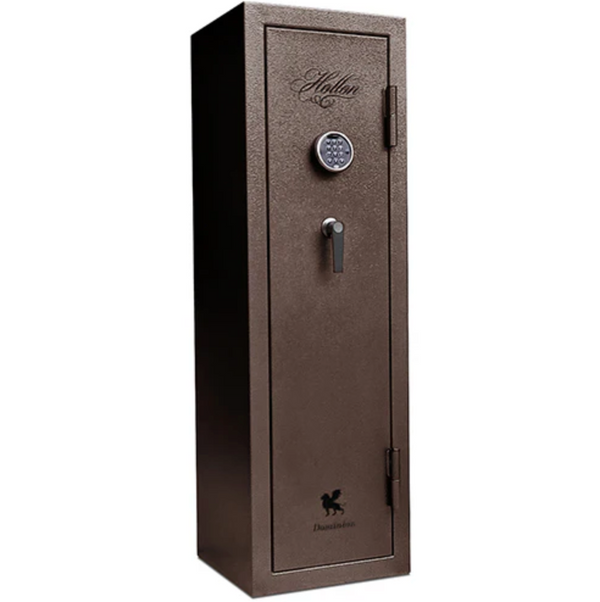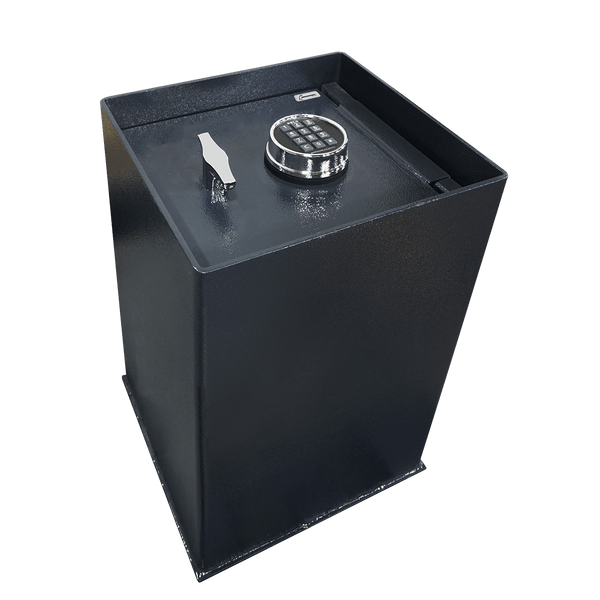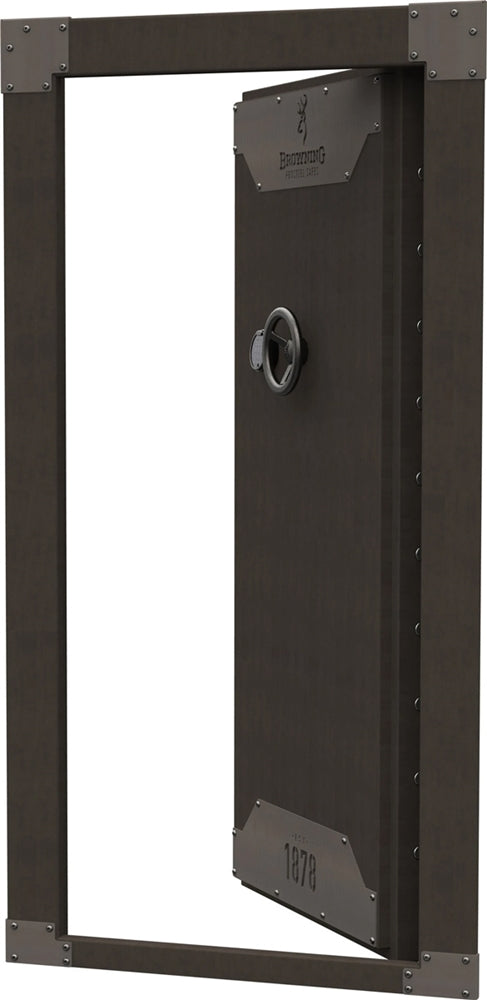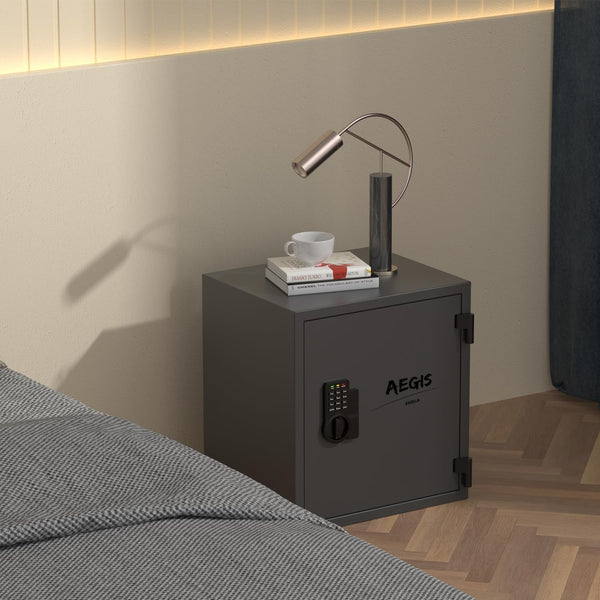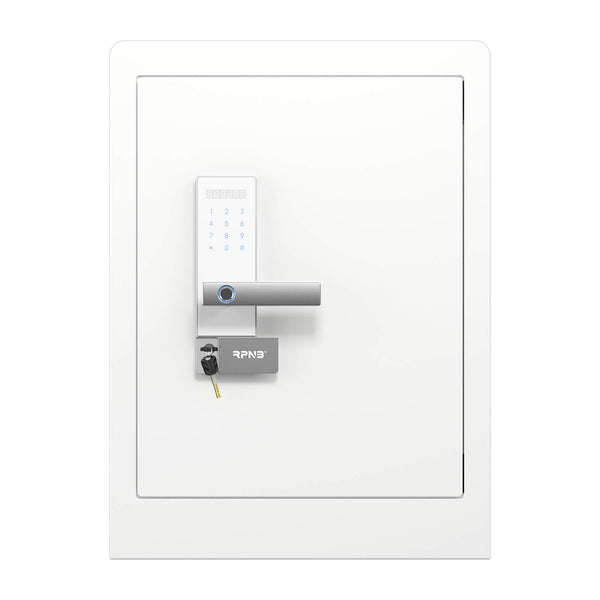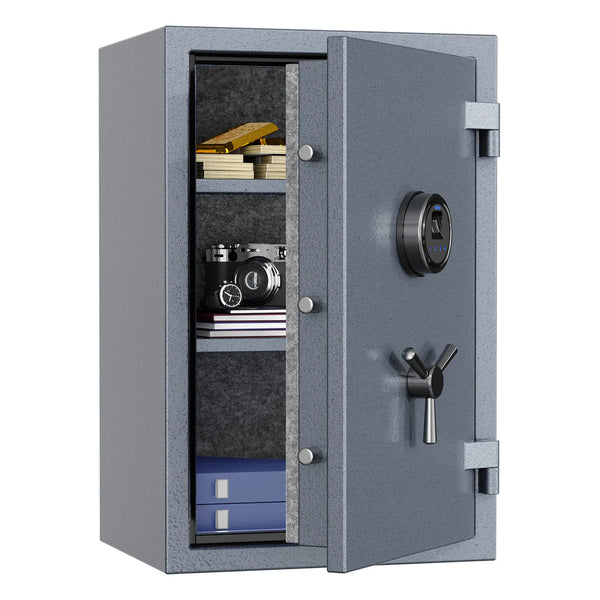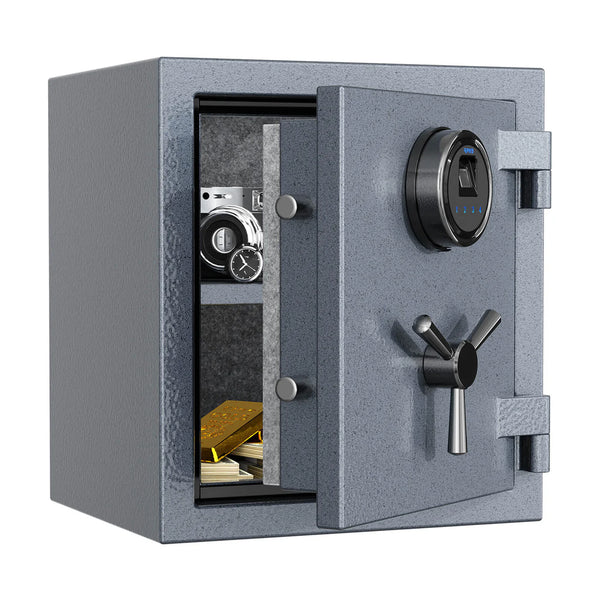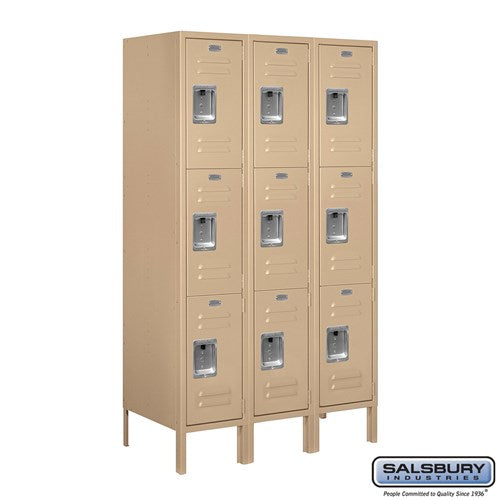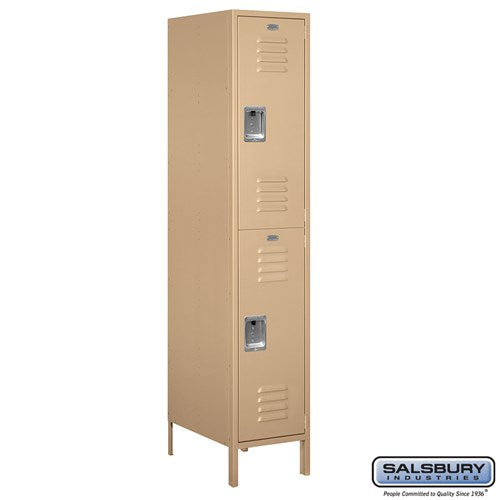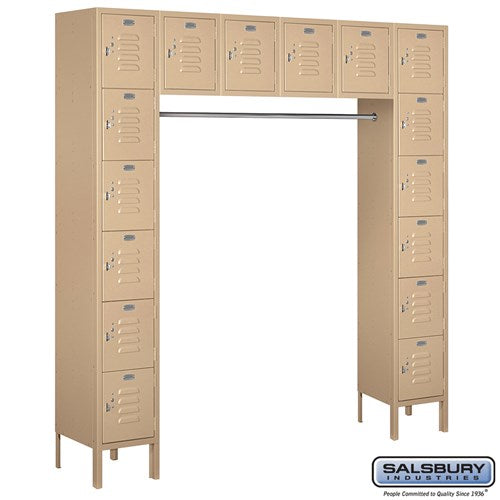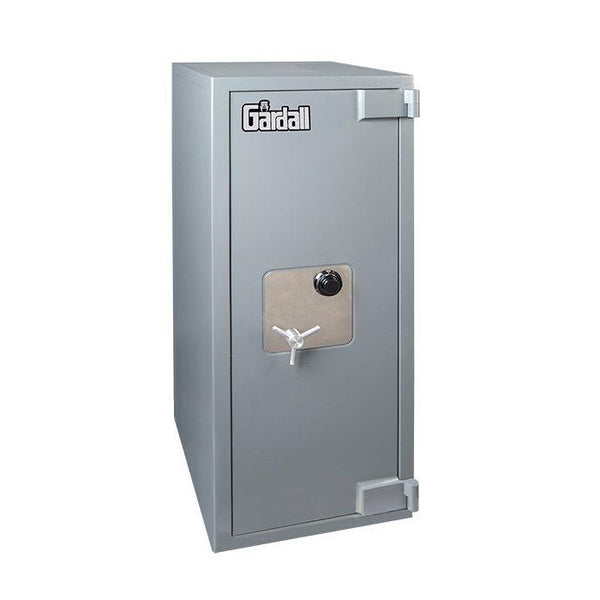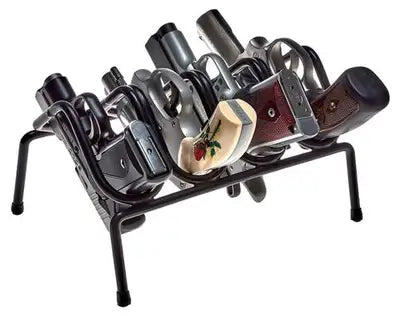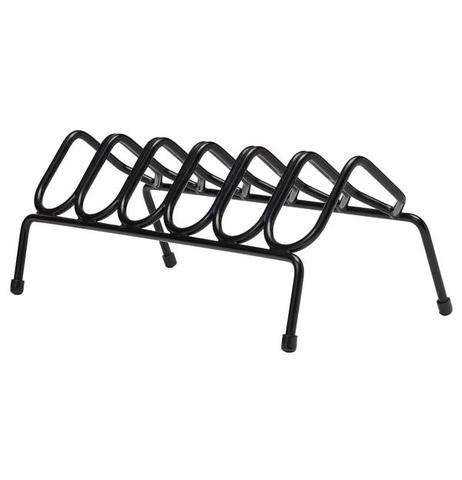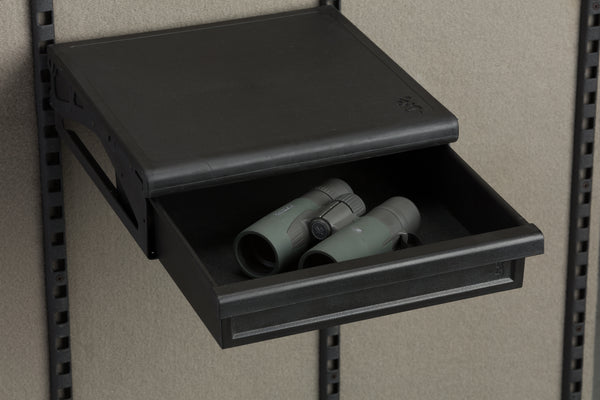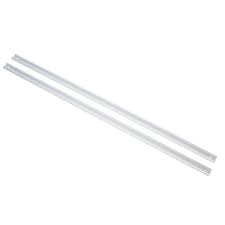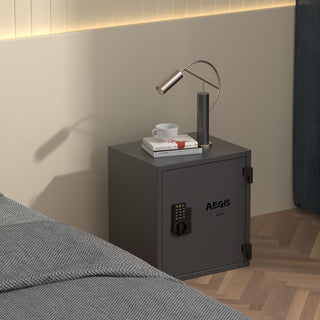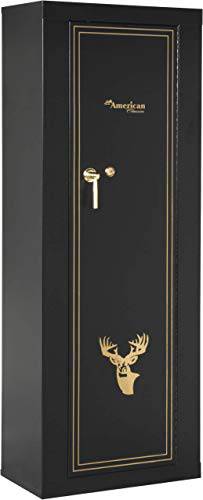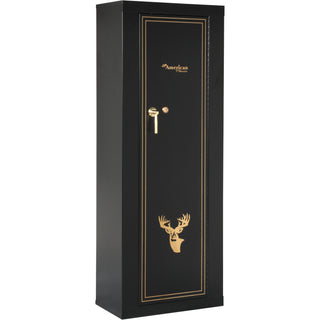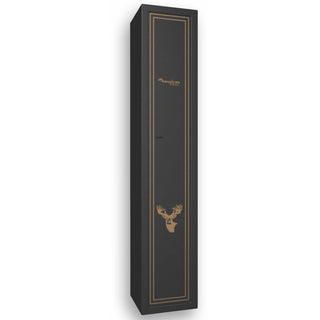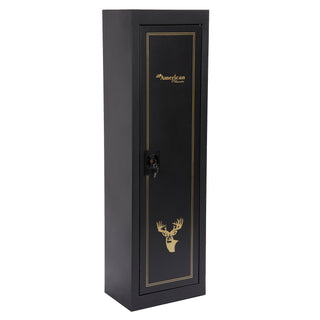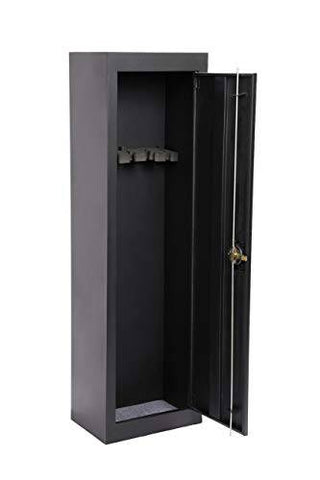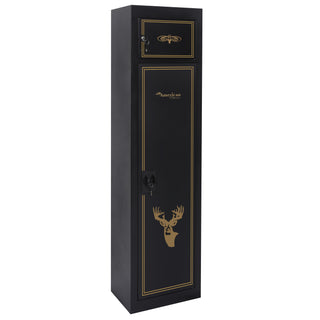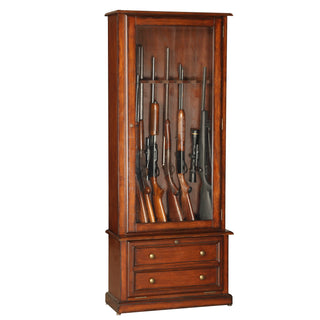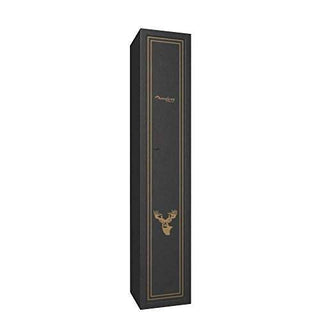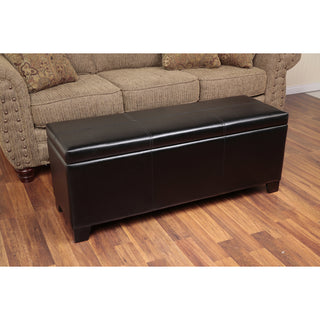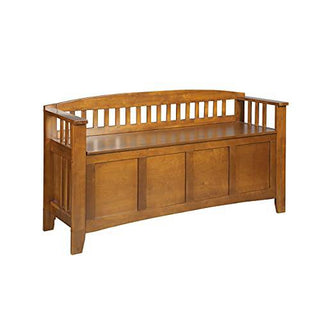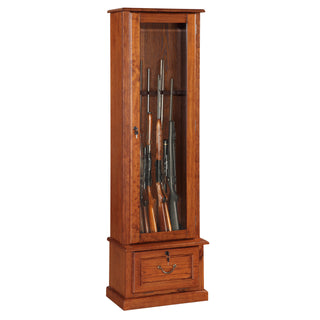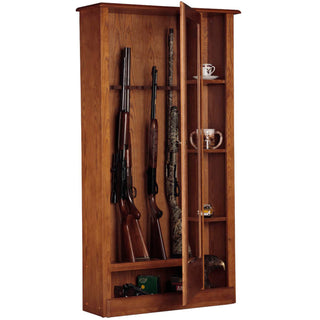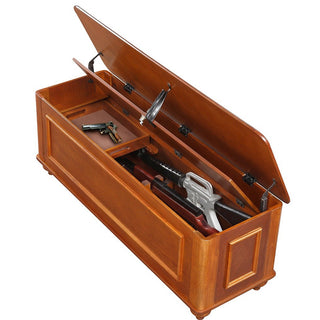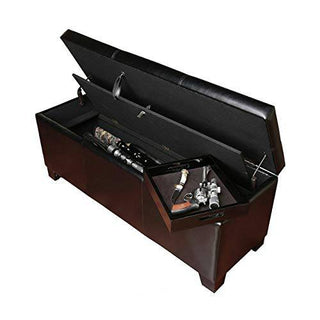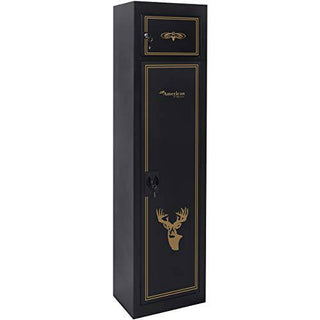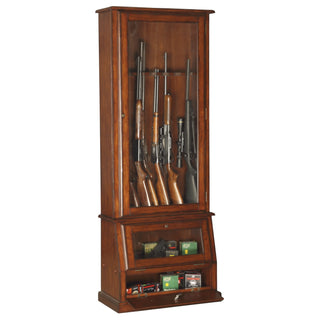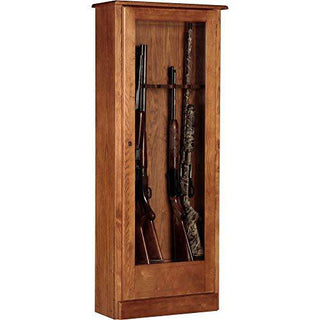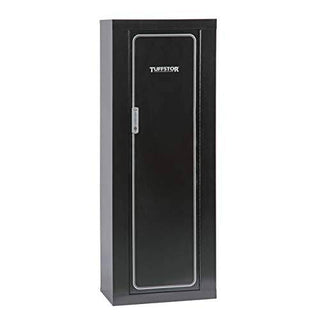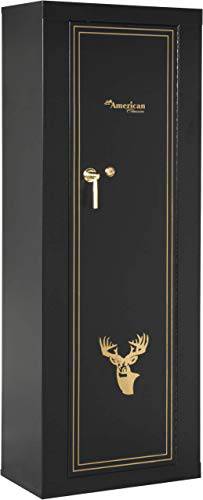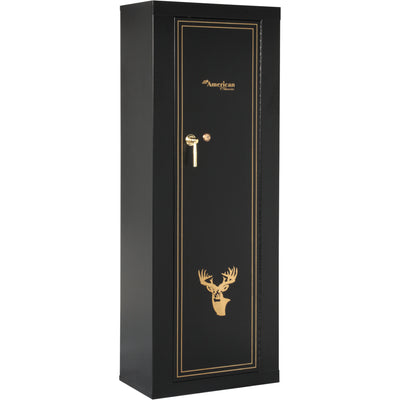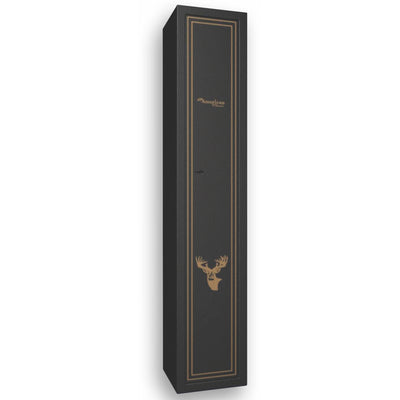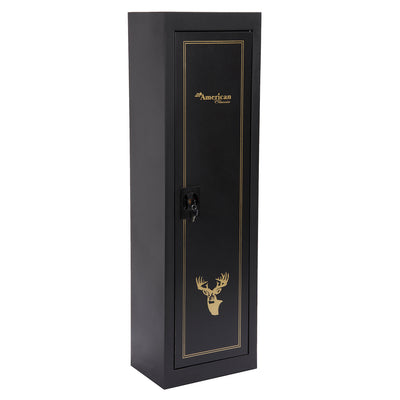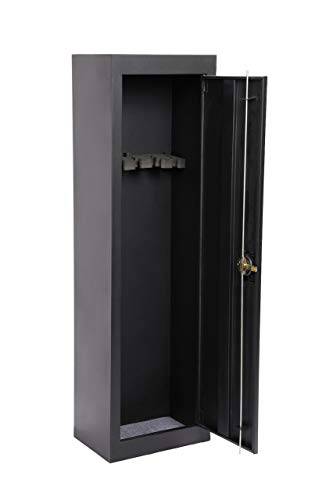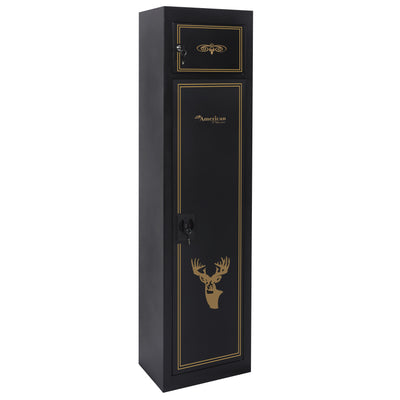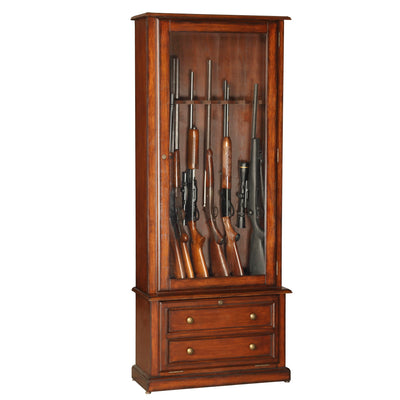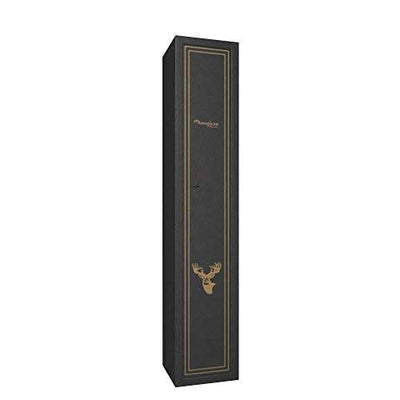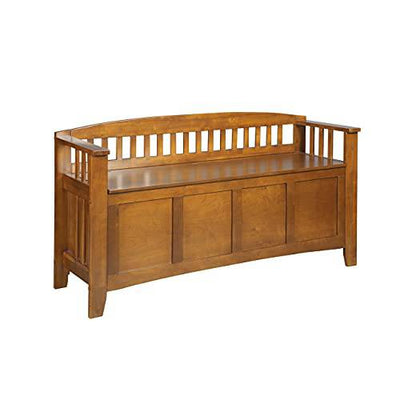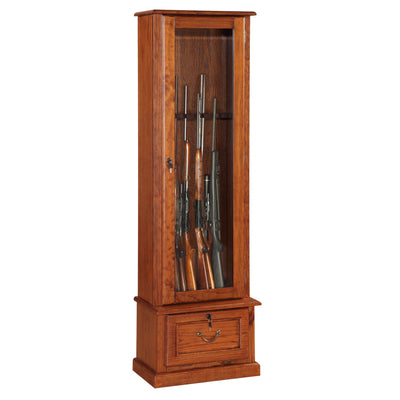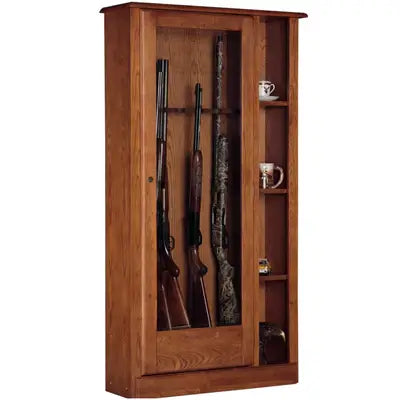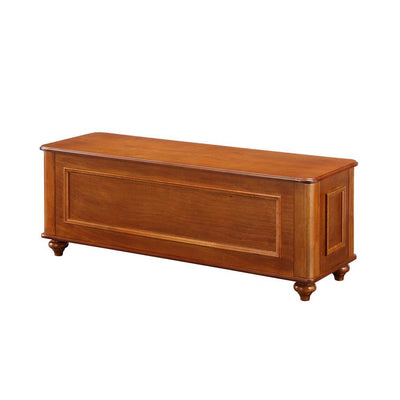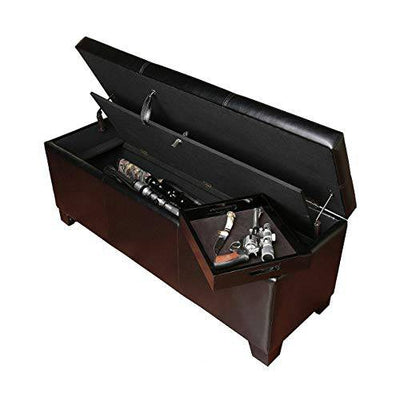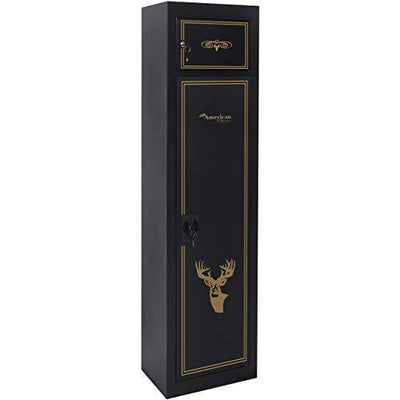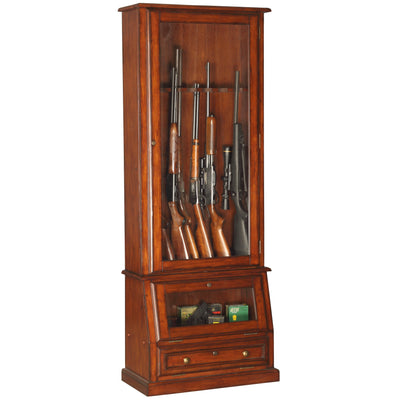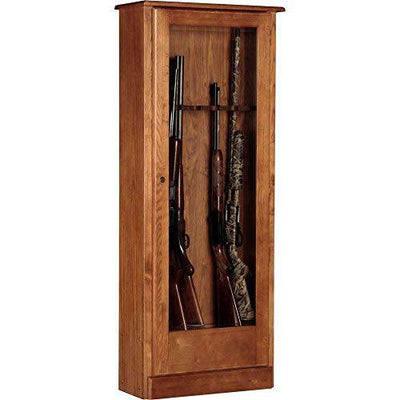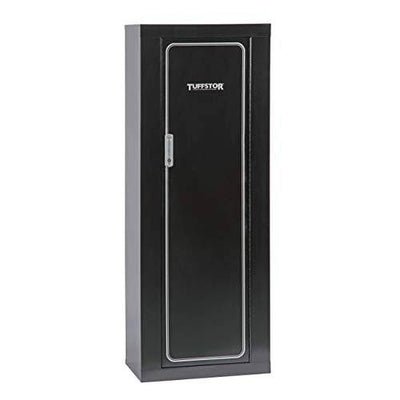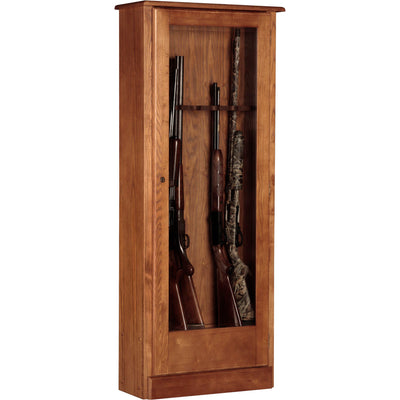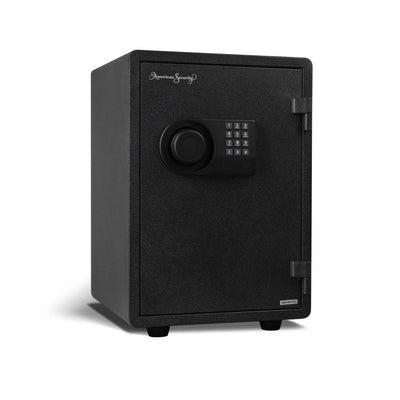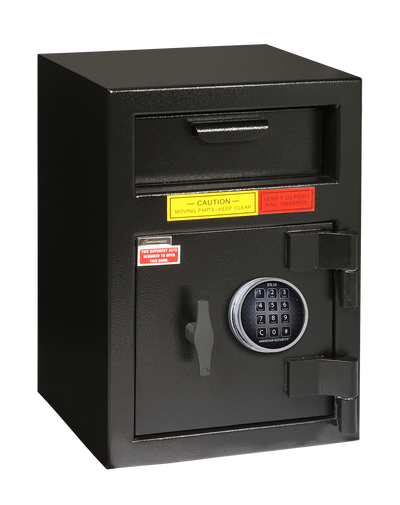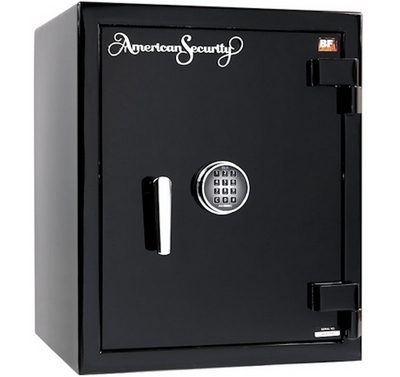
*This post contains affiliate links to products. We may receive a commission for purchases made through these links, but it never influences our product selection process.
Table of Contents
- What Are the Four Rules for Firearm Safety?
- Should You Store Your Loaded Handgun in a Safe?
- Gun Safety: Do I Need a Safe For My Gun?
- Should I Get a Gun Safe Or Cabinet?
- When Should I Get a Gun Safe?
- How Much Should You Spend On a Gun Safe?
- What Should I Look For When Buying a Gun Safe?
- Should Ammo Be Kept In a Gun Safe?
- What Should The Humidity Be In a Gun Safe?
- What Temperature is Ideal for a Gun Safe Be At?
- Do You Need To Bolt Down a Gun Safe?
- Where Should You Put a Gun Safe?
- Should You Put Anything Under a Gun Safe?
- FAQs (What Readers Want To Know)
- Conclusion
A common question among firearm owners is, "Should I store a loaded weapon in a safe?" The Pew Research Center has found that 70% of women and 65% of men cite protection as their primary reason for gun ownership. However, not everyone is aware of the laws and best practices regarding the storage of loaded or unloaded firearms and ammunition.
Although having a readily accessible loaded handgun can provide a sense of security during a potential burglary or home invasion, it's essential to understand the risks. If your firearm is stolen and used in a crime, you might face legal consequences. That's why storing a firearm without adequate safeguards is never recommended. Just as locking your front door is a fundamental security measure, storing your firearms safely is equally important.
Responsible gun ownership involves more than just obtaining a permit; it also means storing your firearms properly. And the best way to securely store a loaded gun is in a gun safe. Whether you're considering gun ownership or already own firearms, it's crucial to understand the aspects of keeping a loaded gun in your home.
What Are the Four Rules for Firearm Safety?
| Treat every firearm as if it's loaded. | Even if you've just unloaded your gun or you're sure it's unloaded, it's best to handle it as if it were loaded, reducing the chances of negligent discharges. |
| Never point the firearm at anything you don't intend to destroy | To prevent unintentional shootings, always control the direction of your firearm's muzzle. |
| Keep your finger off the trigger until your sights are on the target and you have made the decision to shoot | This helps in avoiding accidental firing when you don't intend to pull the trigger. |
| Be sure of your target and what's behind it | Knowing what's in front and behind your target can help avoid unwanted accidents, especially in a home protection situation. |
Should You Store Your Loaded Handgun in a Safe?

Leaving a loaded or unloaded firearm accessible to just anyone is risky. The key to maintaining gun safety is to store your weapons and ammunition securely in a safe or gun cabinet. This precaution not only prevents unauthorized access but also helps avoid accidental discharges and safeguards your ammunition. To put it simply, every firearm should be stored in a secure lockbox or safe that is easy to access when needed.
The main goal of safe firearm storage is to keep them out of the hands of those who aren't authorized or trained to use them. By doing so, you're not only ensuring your safety but also protecting those around you from potential harm.
Gun Safety: Do I Need a Safe For My Gun?
This one really is a no-brainer. The answer is - YES. A safe is the best place to keep a loaded (or unloaded) firearm when not in use. The majority of states in the United States require you to store your firearm in a secure location. Purchasing and keeping your gun in a licensed gun safe is the best method to do it.
It's important to remember that a gun sitting out in the open, even in a seemingly secure area, can still pose a significant risk, particularly if there are children or untrained individuals in the house.
As competent adults, whether or not you have children in your home, it's essential to adhere to firearm locking device regulations to guarantee the safety of everyone around you. Incidents such as unauthorized use, theft, and negligent discharges can be effectively averted with the utilization of a gun safe.
Good News: Compact gun safes are now available for owners who like to keep their firearms nearby for nighttime safety. These can fit neatly into a nightstand drawer, combining convenience with security.
Should I Get a Gun Safe Or Cabinet?
Securing your weapons helps protect your rights, keeps you secure, and ensures the safety of any children or visitors in your house. It's preferable to have purchased a gun safe to store your guns than to be continuously concerned that someone could accidentally come across your firearms and inflict damage.
There are pistol safes, gun safes, gun cabinets, and a slew of additional options. But what's the difference between a gun safe and a gun cabinet? The locking mechanism and steel thickness are the main distinctions between a gun safe and a gun cabinet. Gun safes feature a lock and reinforced steel, whereas gun cabinets need a key and are made with thin steel, similar to a traditional garage cabinet.
Gun cabinets are inexpensive, portable, and provide an easy way to store weapons securely. Because of the simplicity of purchase and availability at large box retailers, many people will wind up owning one of them. Gun cabinets are extensively utilized in houses, which is one of the reasons many homes are safe since children cannot access them.
Gun safes will provide the most security of the two types of safes! They feature stronger steel, better locks, and a higher fire rating and are often the best solution for securing more precious objects. Safes will not only keep minors away from your guns but also protect you against smash-and-grab attacks.
When Should I Get a Gun Safe?
Accidents are an unfortunate reality of life. Much like safeguarding your cash in a bank to protect it from theft, you should consider your firearm an asset needing similar protection. One of the primary reasons is to ensure defense against theft, as burglars often steal weapons from homes for use in various illicit activities.
Moreover, tragic incidents often occur when children accidentally access improperly stored firearms at home. As a responsible parent, your children's safety should be paramount. You must take all necessary precautions to prevent them from accessing either an unsecured loaded gun or an unloaded gun. The best method to achieve this is through the use of a gun safe. Childproofing your gun collection and educating your family on gun safety practices is a crucial step you won't regret taking.
How Much Should You Spend On a Gun Safe?

A good rule of thumb is to make sure the worth of your safe is between 10 and 30% of the total cost of all the stuff within. So, if you have $10,000 in the safe, you should probably spend between $2000 and $3000 on it. Safes can cost anywhere between $200 to $10,000 or more.
When it comes to gun safes, size is important. Of course, bigger generally means more money. The price of a safe correlates to the amount of security it provides. The thickness of the steel used to construct the safe, the locking mechanisms, and the locking bars are all important factors in determining a safe's security grade. You'll spend more for a better security grade but receive more security.
What Should I Look For When Buying a Gun Safe?
| Theft Protection | The primary reason for owning a gun safe. Safes secure firearms from unauthorized users, helping prevent potential theft and accidental discharges. |
| Fire Resistance | Safes should offer fire protection. Look for multiple layers of fireboard in the safe's construction, enhancing its ability to withstand heat. Don't rely solely on advertised fire ratings, as they can sometimes be exaggerated. |
| Locking Mechanism | The more sides with bolts or bars, the better. Advanced safes feature locking mechanisms not only on the side opposite the hinges but also on the top, bottom, and hinge sides, thwarting pry attacks. |
| Relockers | A vital security feature. If a lock is tampered with or broken, these fail-safe mechanisms activate, keeping your gun safely stored. Opt for a safe with both internal and external re-lockers for an added layer of security. |
| Lock Quality | Aim for a safe with a UL-rated lock, the gold standard in reliability and safety. A lock's quality can be the key factor in thwarting burglars. If a safe features an internal hard plate resisting drill attacks, that's an additional security advantage. |
Should Ammo Be Kept In a Gun Safe?

Storing your ammunition in a safe or gun cabinet is a wise practice. However, further measures can be taken to safeguard it. Consider using a sealed container or ammo box to shield the bullet's lead from the corrosive elements in the air. Although ammunition manufacturers generally advise against using bullets that are over ten years old, you should prioritize safety and consider not using the ammunition if it is close to or over that age.
After a few years, prioritize using your older rounds, perhaps for some range practice. An airtight, watertight ammo container provides optimal storage for your ammunition. Remember, humidity is a bad idea when it comes to ammunition storage. The dryer the environment, the better for preserving your rounds.
What Should The Humidity Be In a Gun Safe?
So, what should the humidity level in my gun safe be? According to the National Rifle Association, your safe should be between 30 and 50 percent humidity at 70 degrees ambient temperature to help prevent rust and corrosion.
The optimal humidity level for storing guns is 50%. Rust can build on your guns if you dwell in an area with a humidity level of more than 50%. Even if you keep your guns in a gun safe, moisture can get inside. To ensure that your ammunition lasts as long as possible, make every effort to keep it "dry." The relative humidity should be between 55 and 65 percent when keeping powder. Despite the fact that your powder is within the shell, this is a fantastic location for ammo storage.
What Temperature is Ideal for a Gun Safe Be At?

Maintaining a cool environment for your safe is crucial to prevent overheating. Ideally, the temperature should range from 60 to 70 degrees Fahrenheit. Guns are primarily made of steel, which can rust upon exposure to water. If your firearm is stored in a safe without temperature control, it can rust, damaging and malfunctioning the gun components.
Notably, even a small amount of moisture trapped in a gun safe can harm firearms and other valuables. In low-humidity conditions, a desiccant humidifier might suffice. Just remember to replace it periodically to ensure it remains effective. Always monitor the humidity and temperature levels inside your gun safe. The National Rifle Association suggests maintaining a humidity level of 30% to 50% at temperatures between 60 and 70 degrees Fahrenheit in your gun safe.
Do You Need To Bolt Down a Gun Safe?

According to manufacturer instructions, bolting safes to the floor is vital to prevent any unfortunate incidents. This safety measure ensures the safe, along with its contents such as loaded firearms, knives, and other potential hazards, remains stable and doesn't topple over, causing harm to anyone nearby.
Bolting your safe increases security and helps avoid damage to your property and mishaps that might cause harm or even death to a loved one if it goes over.
Consider how harmful it would be if heavy safe tips over if you didn't install bolts on your floor. You may need to secure a safe without bolting it to the floor, depending on where you reside, weather conditions, and other reasons. To do this you can run a series of 1/2 inch bolts through the back wall of a gun safe, then through a 4X4 1/2 inch square metal washer on the rear of your wall to keep it secure. Of course, this is assuming that you can get to the opposite side of your wall.
Where Should You Put a Gun Safe?
Installing a gun safe in your garage may seem convenient, but it comes with challenges like extreme temperatures, fire hazards, and ease of access. It's important to factor in these considerations for a safe and secure setup. Opting for a less conspicuous location, like an unused closet or a corner in your garage, might be more beneficial.
Gun safes and hobby collection safes can find a home anywhere from the garage, office, spare bedroom, or closet to the living area. The first floor of a home, especially if it's above a crawl area, is another fire-safe option. If your home's first floor is above the basement, it's the most suitable location to keep your gun safe and protected from potential fire sources like the kitchen.
If you have a larger safe, consider installing it on your closet floor, securing it with bolts for extra stability. Gun safes should also be placed away from any potential fire hazards. For this reason, keeping gun safes away from the kitchen area is a wise decision. The safe could be at risk if it's located directly under the kitchen due to potential water damage during firefighting efforts and the possibility of structural collapse in case of a serious fire. In such a scenario, the safest place would be on a concrete slab.
What Should I Set My Gun Safe On?
Concrete flooring is unquestionably durable. This flooring can handle the exceptional weight, including the biggest gun safes, when utilized as a foundation for a home without a basement or crawlspace. They're a great option for a secure installation.
Should You Put Anything Under a Gun Safe?
It's not a good idea to have a free-standing gun safe on top of concrete. This is because, over time, concrete may absorb and release water, just like a sponge. When extra moisture gets behind a safe in a humid basement, it can lead to rust. Rusting can begin to erode the safe's structural integrity.
Use 3/4" plywood or a multipurpose rubber floor mat. Because it does not absorb moisture, the rubber floor mat is ideal. The smaller the barrier, the better; leave as little space between the safe and the floor as feasible. This also ensures that burglars will not be able to access the safe. Another option is to use epoxy to seal the concrete before installing the safe. Both ways will aid in the protection of your safe from water damage.
The footprint of the safe can be a sheet of plywood or rubber matting. Anti-vibration pads can raise the gun safe to facilitate air passage. Vibration pads, also known as vibration dampening pads, are typically used in domestic appliances such as washers, dryers, and gun safes.
FAQs (What Readers Want To Know)
Is It OK To Keep a Gun Loaded?
Keeping a loaded gun safely is OK, such as in a gun safe.
Why You Shouldn't Get Into Guns (Or Should)
Owning a firearm gives you a way to defend yourself and your family from intruders or burglars. Provided you have the right gun safe, it is not dangerous to own a gun or have one in your house - even a loaded one.
How can I defend myself if I do not own a gun?
If you do not own a gun, you can invest in a legal self-defense weapon such as a tactical pen, tactical knife, or pepper spray.
Where is the best safe storage place for a loaded handgun at home?
A locked gun safe is the best place to store a loaded handgun at home. It prevents unauthorized users from accessing it while allowing quick access for self-defense.
What measures can help ensure safe storage and ownership of firearms?"
Safe firearm ownership involves securing firearms in a locked safe, using a trigger guard, trigger locks, or biometric locks, and storing ammunition separately. Regular firearms training also promotes safety.
Can keeping a loaded gun at home lead to criminal liability?"
If a loaded gun at home is accessed by unauthorized users, especially minors, and used in a dangerous situation, the gun owner may face criminal liability.
What safety measures should be in place when children visit a house with a loaded gun?
When children visit, all guns should be stored unloaded and locked away, with ammunition locked separately. Parents should also teach children basic rules of gun safety.
Is there a risk of firearm injury when storing a loaded gun?"
Storing a loaded gun does increase the risk of unintentional firearm injury, especially in homes with small children or where other unauthorized users can access it.
What are the key factors in safe gun storage?"
Key factors in safe gun storage include storing firearms unloaded, using a trigger lock or cable locks, and securing guns and ammunition in separate, locked compartments. It's also essential to keep gun safes inaccessible to unauthorized users. It's also important to ensure the firing pin is in good working order for the firearm to function safely and correctly.
What is a smash-and-grab attack?
It is a type of burglary that involves breaking into a place, typically a store or vehicle, grabbing valuable items quickly, and fleeing before law enforcement can arrive. It's usually a swift, forceful act where the perpetrator aims to accomplish their goal in the shortest time possible. These attacks can be a risk for gun owners if firearms are not securely stored in robust safes or storage units, emphasizing the importance of proper firearm security.
Conclusion:
In conclusion, the question of "Should I keep a loaded gun in a safe?" prompts a crucial discussion for every gun owner. Striking the balance between swift access for defense and safety against unauthorized use or theft may seem challenging, but investing in a quality gun safe is the solution. A good safe allows for secure storage, whether your firearm is loaded or unloaded, and offers you peace of mind. We encourage responsible gun ownership, which entails not just the right to possess firearms but the wisdom to store them securely and prevent unwanted incidents. Investing in a gun safe is not just a decision; it's a commitment to safety and responsibility









